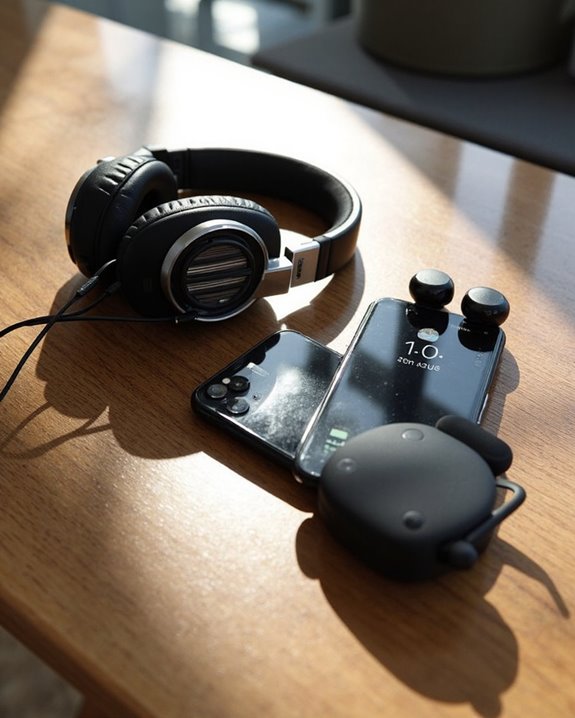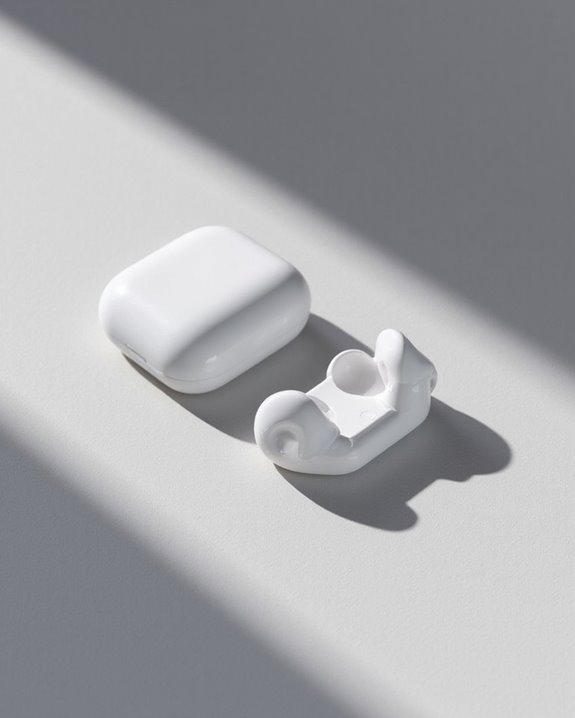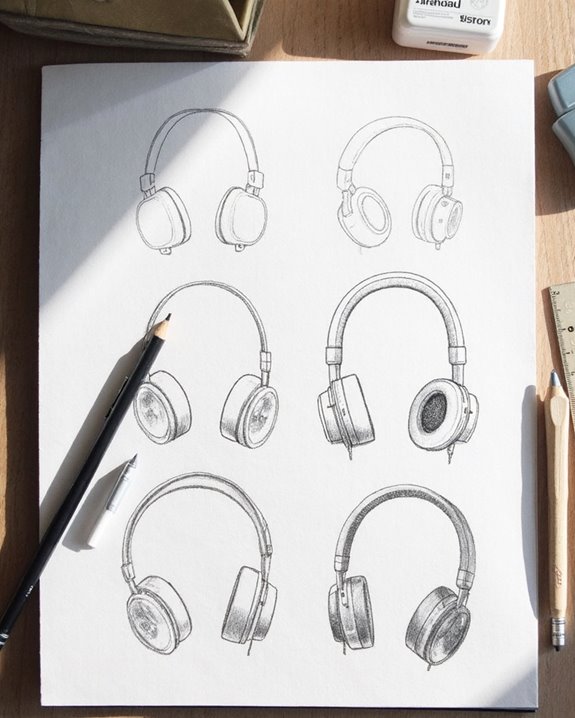Headphones and earbuds serve different purposes, with headphones excelling in sound quality, comfort during extended use, and hearing protection. They deliver superior bass, wider soundstage, and fuller frequency range through larger drivers. Earbuds win on portability with compact design and minimal storage requirements. The choice ultimately depends on priorities: sound quality and comfort versus convenience and mobility. The comparison across various price points reveals distinct advantages for each listening solution.
Key Takeaways
- Headphones deliver superior sound quality with wider soundstage, deeper bass, and fuller frequency range than earbuds.
- Headphones distribute weight evenly with cushioned padding, making them more comfortable for extended listening sessions.
- Earbuds excel in portability with compact design, while headphones prioritize sonic performance through larger drivers.
- Headphones create a protective seal reducing the need for excessive volume, potentially preventing hearing damage.
- Headphones typically offer better value across price ranges with richer features, though earbuds prioritize convenience and mobility.
Sound Quality: Where Headphones and Earbuds Truly Differ
When comparing headphones and earbuds, sound quality represents the most fundamental differentiator between these two audio devices. The physical design of each creates distinct listening experiences that impact how users perceive audio.
Headphones generally deliver superior Bass Performance through their larger drivers, reproducing low frequencies with greater depth and accuracy. This results in richer, more powerful bass notes that earbuds typically cannot match despite technological advancements.
The Spatial Effects between these devices also differ markedly. Headphones create a wider soundstage, offering more immersive 3D audio capabilities and realistic sound positioning. Earbuds, while providing more direct and intimate sound delivery, typically present a narrower soundstage with less dimensional depth.
For audiophiles seeking the fullest frequency range and expansive sound field, headphones typically hold the advantage. Many professional-grade headphones prioritize a wide frequency response of 20Hz-20kHz and high sensitivity for optimal audio performance.
Comfort Factors: Finding Your Perfect Fit
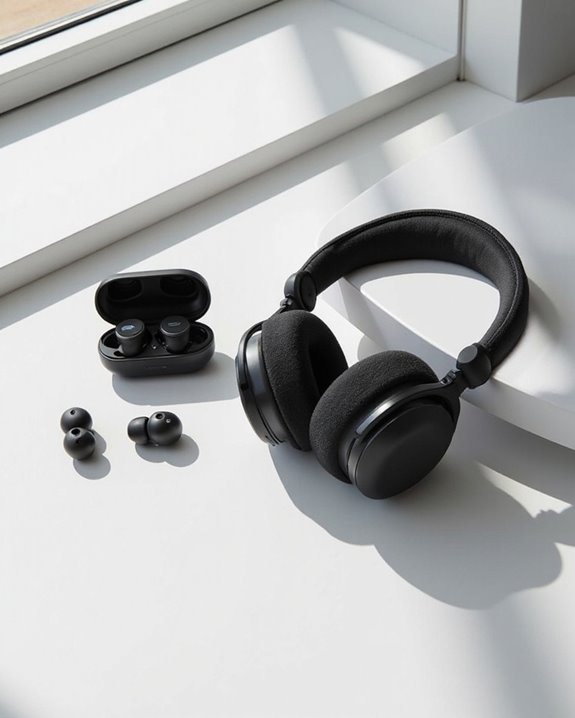
Sound quality may attract audiophiles to either device, but physical comfort determines which audio solution users can tolerate for hours on end. Headphones typically excel in Extended Wear scenarios, distributing weight evenly across the head while surrounding ears with cushioned padding.
Earbuds, conversely, insert directly into ear canals, which can cause discomfort during marathon listening sessions despite their lightweight design. Many manufacturers address this with customizable ear tips in various sizes and materials.
Pressure Relief features distinguish premium audio devices from basic models. Headphones offer adjustable headbands and earcups that accommodate different head shapes, while advanced earbuds incorporate venting systems to equalize pressure within the ear canal.
For active users, earbuds with stability fins provide secure fits during workouts, whereas headphones offer superior stability for general movement with less impact. Additionally, headphones with memory foam ear cushions provide even pressure distribution and mold to unique ear shapes for hours of wear, enhancing comfort during extended listening sessions.
Portability Vs Performance: the Everyday Trade-Off
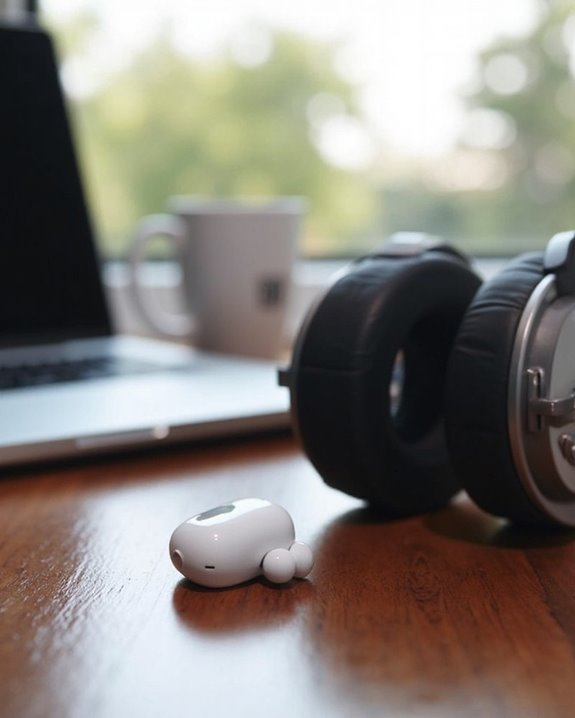
The eternal dilemma between portability and performance defines the headphone versus earbud decision for most audio enthusiasts. This trade-off becomes particularly evident when considering Daily Mobility requirements against sound quality expectations.
Earbuds excel in portability metrics with their compact design and lightweight profile, making them superior Travel Options for commuters and frequent travelers. Their charging cases enhance convenience while requiring minimal storage space.
Headphones, conversely, deliver superior sonic performance through larger drivers and better noise cancellation capabilities. This improved audio fidelity comes at the cost of increased bulk and storage considerations.
The choice ultimately depends on prioritization: earbuds for activities requiring mobility (running, commuting), and headphones for scenarios where immersive sound quality takes precedence (studio work, focused listening sessions). Each form factor represents a calculated compromise between convenience and acoustic performance.
Models like the Soundcore P20i True Wireless Earbuds demonstrate that earbuds can offer impressive features such as customizable EQ and long battery life, bridging some gaps between portability and sound quality.
Protecting Your Hearing: Health Implications to Consider
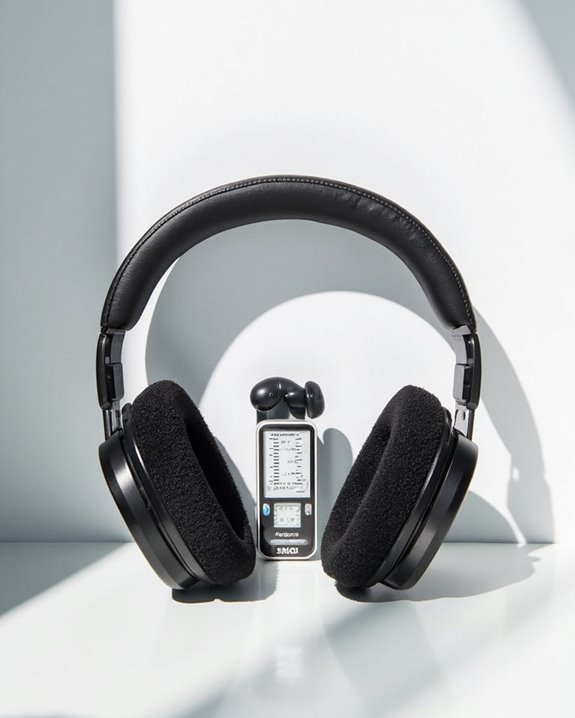
Beyond the convenience-versus-performance equation lies an often overlooked factor in the headphones-earbuds debate: hearing health. The fundamental design difference between these devices substantially impacts auditory safety. Earbuds funnel sound directly into the ear canal, concentrating potentially harmful sound pressure on the eardrum.
Over-ear headphones create a protective seal that reduces the need for excessive volume, offering superior Hearing Protection. This distinction matters critically as 24% of young adults already listen at unsafe levels, risking permanent damage.
Research reveals hearing loss as the primary modifiable risk factor for dementia in middle age—a Dementia Link that underscores the importance of safe listening habits. With personal audio devices reaching dangerous decibel levels (94-110 dB), choosing headphones that minimize direct sound pressure may help preserve long-term cognitive and auditory health.
Price Points: What You Get at Different Budgets
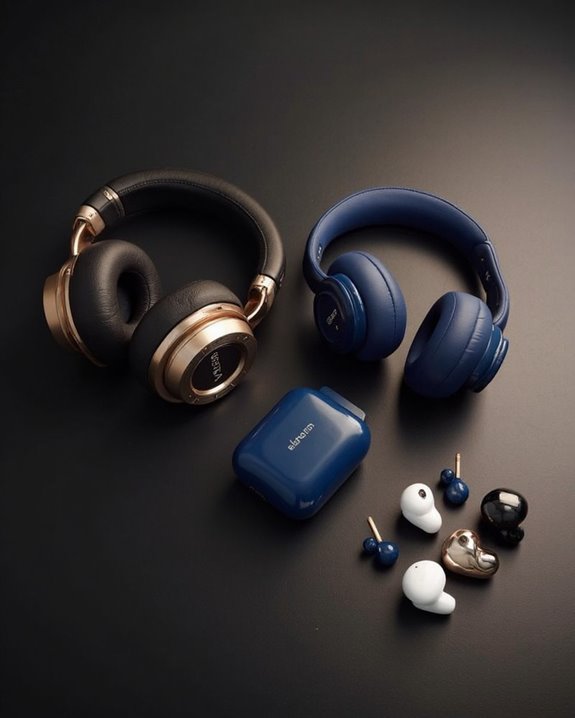
Finding the perfect audio device often hinges on budget constraints, with price points greatly influencing the quality and features available in both headphones and earbuds.
In the under-$50 range, headphones like the Sony CH-520 typically offer superior sound quality and battery life compared to budget earbuds, though both generally lack advanced features. Mid-range options ($100-$300) introduce active noise cancellation and better microphone quality, with headphones delivering richer soundstage and deeper bass.
Premium models ($300+) feature larger drivers, enhanced comfort, and superior warranty coverage. While high-end earbuds are closing the feature gap, headphones typically include more extensive accessory inclusions such as carrying cases and replacement ear pads.
The price-performance equation differs: earbuds prioritize portability, while headphones emphasize sound quality and feature completeness across all budgets.
Frequently Asked Questions
Can Earbuds or Headphones Connect to Multiple Devices Simultaneously?
Yes, select earbuds and headphones support multi device pairing, allowing simultaneous connectivity to multiple devices. This feature, known as multipoint technology, typically enables connections to two devices at once for seamless audio switching.
How Long Do Wireless Headphones Typically Last Before Needing Replacement?
Wireless headphones typically last 4-8 years before replacement. Battery longevity ultimately determines their lifespan, with capacity diminishing through charging cycles. Proper headphone maintenance, including appropriate storage and careful usage, can greatly extend their operational life.
Are Bone Conduction Headphones Better for Outdoor Activities?
Bone conduction headphones excel in outdoor activities due to their enhanced outdoor safety features, allowing ambient awareness. Their weather durability withstands sweat and elements, while the open-ear design provides comfort during extended physical activities.
Do Headphone Cables Affect Sound Quality Compared to Wireless Models?
While some insist cables are mere fashion statements, they actually impact audio greatly. Cable Impact on sound quality includes zero latency and uncompressed transmission, offering superior Wireless Fidelity compared to Bluetooth’s inherent compression limitations.
Can Earbuds Cause Ear Infections With Regular Use?
Yes, earbuds can cause ear infections with regular use. Proper ear hygiene is essential for infection prevention as earbuds may introduce bacteria, create warm, moist environments, and push earwax deeper into the canal.

